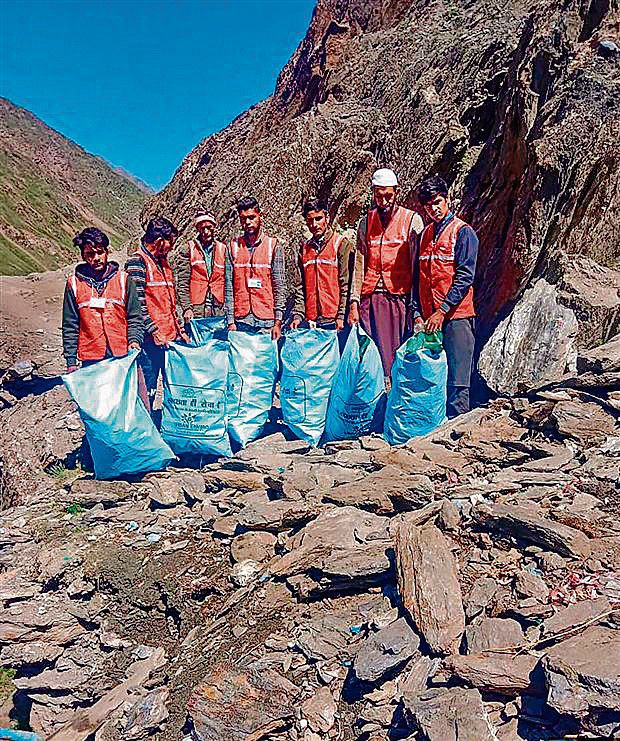Srinagar, July 17
In the ongoing Amarnath Yatra, the Jammu and Kashmir administration is aiming to achieve zero landfill and zero waste while maintaining cleanliness during the pilgrimage, according to officials.
According to an official spokesperson, the Directorate of Rural Sanitation has launched various initiatives to make the annual yatra a zero-landfill pilgrimage. In the first 20 days of the pilgrimage, a significant amount of waste has been generated by devotees and service providers, he said.
Zero landfill pilgrimage
- J&K admn aims to achieve zero landfill and zero waste while maintaining cleanliness during the pilgrimage
- Waste mgmt strategy involves the careful segregation and processing of wet and dry waste, ban on plastic, mass awareness, proper disposal of waste
- Water ATMs have been installed at yatra basecamps and en route to holy cave to reduce the PET bottles consumption
- More than 7,000 sanitation workers are working in 3- shifts to clean the basecamps, roads, routes, and other resting places
- 2245 toilet units installed and maintained along the Pahalgam axis while 1,660 toilet units installed along the Baltal route to improve sanitation
“The cumulative figure of waste on both axis remains 200 tonnes. Total quantity of waste processed in tonnes is 162.40 tonnes, and total inert waste generated in tonnes is 34.30 tonnes,” said the spokesperson. He said of the total 200 tonnes of waste, the wet waste collection is 85.15 tonnes, of which 85.02 tonnes of wet waste was processed.
According to officials, the dry waste collection is 80.31 tonnes, out of which 77.38 tonnes was processed and only 3 tonnes of waste is yet to be processed. “Similarly, out of 34.30 tonnes of inert, 25 tonnes was sent to the Srinagar Municipal Corporation (SMC),” the statement said.
The spokesperson said these figures “highlighted the effectiveness of the waste management strategy, which emphasises the separate collection and processing of wet and dry waste to minimise environmental impact.”
The officials said the waste management strategy involves the careful segregation and processing of wet and dry waste, and it also includes the use of eco-friendly bags, a ban on plastic, mass awareness programmes, proper disposal of waste, water ATMs, mascots for awareness and other measures transforming the yatra into an environmentally conscious pilgrimage.
The spokesperson said several initiatives with services providers have been taken to ensure a clean and waste-free yatra. “Eco-friendly bags were being provided in place of plastic and polythene bags. Water ATMs have been installed at yatra basecamps and en route to holy cave to reduce the PET bottles consumption,” he said.
More than 7,000 sanitation workers are working in 3- shifts to clean the basecamps, roads, routes, and other resting places, said officials, adding that eight vehicles – five at the Baltal axis and three at the Pahalgam axis – had been deployed for collection and transportation of waste at the base camp locations.
Also, more than 600 trained workers and 25 management and supervisory staff have been deployed on both axis, about 2245 toilet units and 235 bathing points had been installed and maintained along the Pahalgam axis while 1,660 toilet units and 490 bathing points had been installed along the Baltal route to improve sanitation, according to the spokesperson.
Unlock Exclusive Insights with The Tribune Premium
Take your experience further with Premium access.
Thought-provoking Opinions, Expert Analysis, In-depth Insights and other Member Only Benefits
Already a Member? Sign In Now











